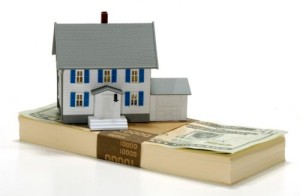 Shopping around for home insurance can be quite a challenge. Multiple insurers can quiz you regarding many things and you can then get multiple quotes. You know that the right way to proceed is to make detailed comparisons before a final decision. But this process can be quite confusing because there can be huge variations in quotes from different carriers.
Shopping around for home insurance can be quite a challenge. Multiple insurers can quiz you regarding many things and you can then get multiple quotes. You know that the right way to proceed is to make detailed comparisons before a final decision. But this process can be quite confusing because there can be huge variations in quotes from different carriers.
Factors That Determine Your Home Insurance Premiums
So what is the basis for setting premiums? Companies take various risk factors into consideration, and each factor is given different scores by different companies.
We’ve compiled a list of some common risk factors that are considered while deriving home insurance premium amounts. Watch out for these when you go house hunting:
1. How Old is Your Home?
The overall structure of a new home is likely to be in a better position than one built a few decades before it. Because of this, older homes have higher homeowner’s insurance rates. The following features are generally taken into account:
- Plumbing
- Electrical Wiring
- HVAC system
In addition, homes built using fire-resistant and sturdy materials like stone, brick, and concrete are offered lower premiums than those constructed using soft and flammable materials; for example, wood.
2. The Importance of Your Credit Score
If a homeowner has a good credit score, he’s considered to have a lower risk level. Statistics have shown that fewer claims are filed by homeowners with good credit ratings as compared to those with poor credit. Because of this, homeowners with good credit get cheaper insurance rates.
3. Is Your Roof in Good Condition?
The older your roof is, the more susceptible it is to weather damage. This results in a greater probability of filing a claim. If you have a new or recently updated roof, you stand to get a lower premium. It’s a good idea to get your roof updated once in 10-20 years.
There are various ways in which you can bring down your premium. You could try to bundle policies – for example, buy both your auto and home insurance from a single carrier. You could also show a monitored fire or burglar alarm with a claims free record to earn a discount on your premium. You can meet up with licensed insurance agents and discuss other ways to save.
4. The Role of Your Electrical System
To get a good insurance rate, your electrical system doesn’t have to be replaced. But yes, you should have updated it during the last 25 years to conform to current codes. There should be circuit breakers; old-fashioned fuses are not acceptable.
5. How Updated Are Your Plumbing Pipes?
Lead and galvanized piping indicate an old plumbing system which is more prone to cracks and leakages. Insurers are happier when homes have updated plumbing work with plastic or copper pipes.
6. Property Risk Aspects That Raise Premiums
Higher homeowner’s insurance rates are applicable to properties having pricey risk factors such as:
- Guest houses
- Swimming pools
- Trampolines
- Aggressive dog breeds
Some insurers totally refuse coverage while others exclude these perils from their policies.
How Your Neighborhood Impacts Insurance Rates
The type of claims filed within the neighborhood can also affect home insurance rates. Your new brick house might have a high-end security system but if lots of old straw houses nearby have recently filed claims, you might unfortunately also be marked as high-risk.
